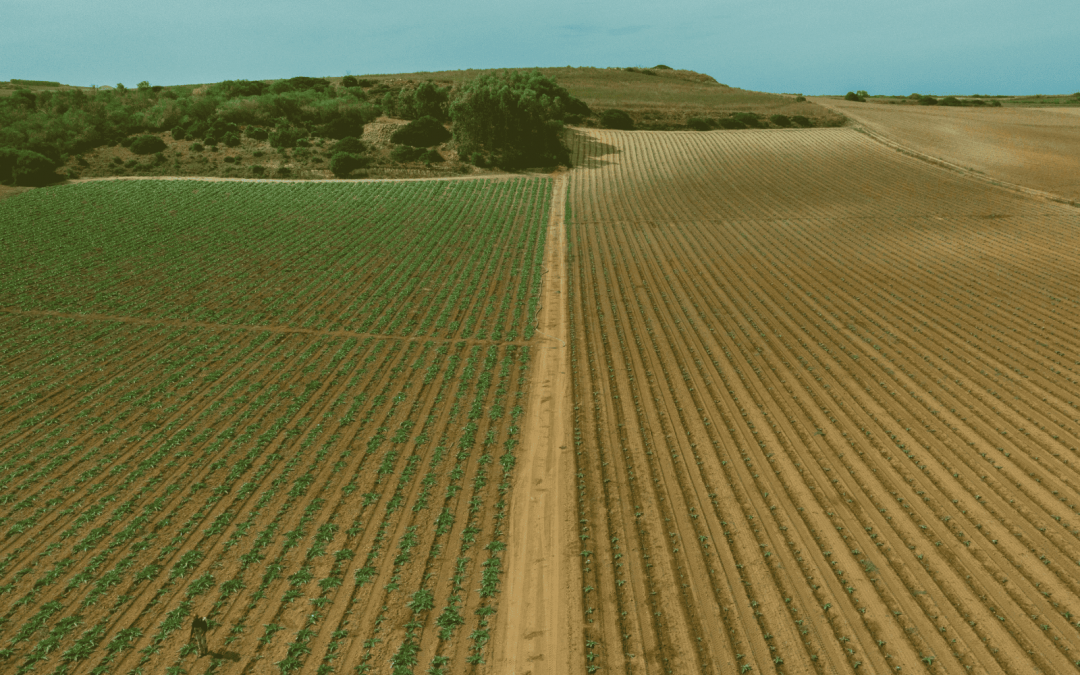In recent times, there has been increasing talk about regenerative agriculture, but more precisely, what is it? And how does it differ from conventional agriculture?
When we talk about regenerative agriculture, we are referring to an innovative approach that not only allows farming organically or reducing pesticide use, but also aims to restore the natural resources present in the soil. But how is this done? By using a series of techniques such as crop rotation, cover cropping, composting, or integrating livestock into farming practices.
But let’s take it step by step.
Before discussing the various techniques, let’s talk about a fundamental aspect of regenerative agriculture: the soil. The soil is considered a living system to be nourished and restored, especially since recent studies, such as the one conducted by the Joint Research Center, have shown that over 60% of soils in the EU are subject to various degradation processes, including water erosion, organic carbon loss, compaction, salinization, and reduced biodiversity, with possible consequences on agricultural productivity.
Currently, most agricultural land in Europe and the United Kingdom, about 23–44%, faces a high risk of organic carbon loss, also due to climate change. This is a problem, since carbon is a key substance for soil: it improves soil structure, helps retain water and nutrients, and thus increases fertility and biodiversity.
But while on the one hand we have agricultural land destined to lose carbon, on the other hand, between 26 and 50 million hectares show potential for carbon sequestration. Still, this is not enough: measures should be adopted that aim to better protect the fertility of agricultural soils.
Some techniques to adopt for regenerative agriculture
Crop Rotation
One of the techniques used in regenerative agriculture is crop rotation, which involves alternating the cultivation of different crops on the same plot of land in cycles that can be seasonal or annual. Through this simple practice, we prevent the proliferation of pests and pathogens that are harmful to crops, while simultaneously improving soil structure and increasing nutrient availability.
Rotation enables true ecological regeneration.
Cover Cropping
The cover cropping technique involves planting cover crops that are not harvested but left to grow on the soil to protect and enrich it, preventing erosion, improving soil structure, and increasing organic matter.
The main benefits of cover cropping include:
-
Improved soil water retention;
-
Reduced soil compaction;
-
Increased biodiversity;
-
Enhanced fertility.
Composting
Composting is a fundamental process for the soil, as it provides nutrients to plants and increases the soil’s ability to retain water.
Composting involves the controlled decomposition of organic materials, such as crop residues, food waste, and/or manure, to create compost.
Integration of Livestock into Agricultural Practices
Integrating livestock into regenerative agriculture means allowing animals to graze, in a controlled manner, within the agricultural ecosystem and letting them roam freely on the plot. The goal is always to naturally improve soil health. This method, in addition to preventing overgrazing, increases soil carbon storage and improves pasture quality.
The role of technology in supporting regenerative practices
So far we have seen the main techniques used in regenerative agriculture, but in order for these practices to reach their full potential, technology plays a fundamental role.
Today, the use of low-cost tools such as moisture, salinity, and nutrient sensors allows farmers to monitor in real time the health of soil and plants. Collecting data makes it possible to carry out predictive analyses and therefore to understand in advance how regenerative practices may influence the harvest, or even determine which measures to adopt to reduce and optimize, for example, water use.
Having access to low-cost IoT systems is vitally important, especially for small farmers or small-scale operations, since without large investments they can afford to collect and access valuable data and information. By making monitoring and predictive analysis accessible to everyone, technologies help spread regenerative practices on a larger scale. Greater accessibility therefore also means wider adoption and a stronger positive impact on the environment, leading to a more sustainable future for all.
Technology and regeneration go hand in hand: smart sensors, shared data, and low-cost tools are the keys to transforming the way we farm, protecting the planet, and ensuring healthier and more resilient harvests.
…But is regenerative agriculture just a passing trend?
According to a study conducted by Eara (the European Alliance for Regenerative Agriculture), adopting regenerative practices in agriculture could mean producing food sustainably, balancing ecological, social, and economic needs.
The study, a multi-year pilot program, was carried out by farmers, experts, institutions, and organizations in 14 European countries, involving 78 farms.
Among the innovations introduced in the research is the RFP index (Regenerating Full Productivity), a multidimensional indicator that measures the full spectrum of soil management outcomes by integrating data from:
-
field surveys and yields of pioneering farmers,
-
Eurostat statistics,
-
satellite observations,
-
comparative analysis across levels: field, nation, EU.
Below are the main results obtained (2021–2023):
-
Regenerative systems (agroecology, organic, agroforestry, conservation farming, etc.) outperform conventional models in agronomic, economic, and ecological terms.
-
Average overall productivity (RFP) was 33% higher than the European average, leading to a greater ability to integrate and regenerate the ecological, economic, and social functions of the agricultural system.
-
+25% photosynthesis, +24% soil cover, and +16% plant diversity compared to surrounding conventional land. These values show that soils have better fertility and greater biodiversity.
-
Yields in terms of calories and proteins were only 2% lower than the conventional average, but with a drastic reduction in inputs: –61% synthetic nitrogen fertilizers and –75% pesticides. Despite slightly lower yields, economic profitability was higher, with a gross margin per hectare 20% greater.
-
Conventional European farms depend on imported feed for over 30%, while pioneering farms achieved similar yields using only feed produced within the EU.
-
A 75% adoption of regenerative practices would make it possible to mitigate about 513 million tons of CO₂ equivalent per year, equal to more than 1.3 times the current emissions of the European agricultural sector.
The Benefits of Regenerative Agriculture
-
Reduction of greenhouse gas emissions: regenerative agriculture can reduce global greenhouse gas emissions by 40–60%, thanks to the decreased use of chemicals and fertilizers.
-
Greater carbon storage and higher levels of organic matter in the soil
-
Increase in biodiversity: it supports flora, fauna, and soil microorganisms, strengthening the food chain and making agricultural ecosystems more stable.
Regenerative Agriculture: A Global Challenge That Starts in Your Field
Low-cost technologies make this approach accessible to everyone, and what was once reserved for large companies is now becoming inclusive, scalable, and capable of generating a real impact on the planet.
Every small field can become part of a global change.
Sources:
https://publications.jrc.ec.europa.eu/repository/handle/JRC137600

